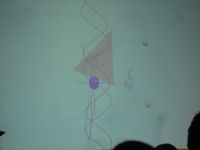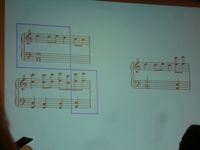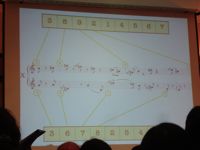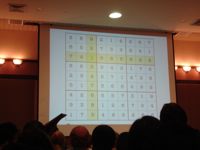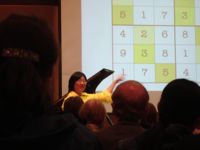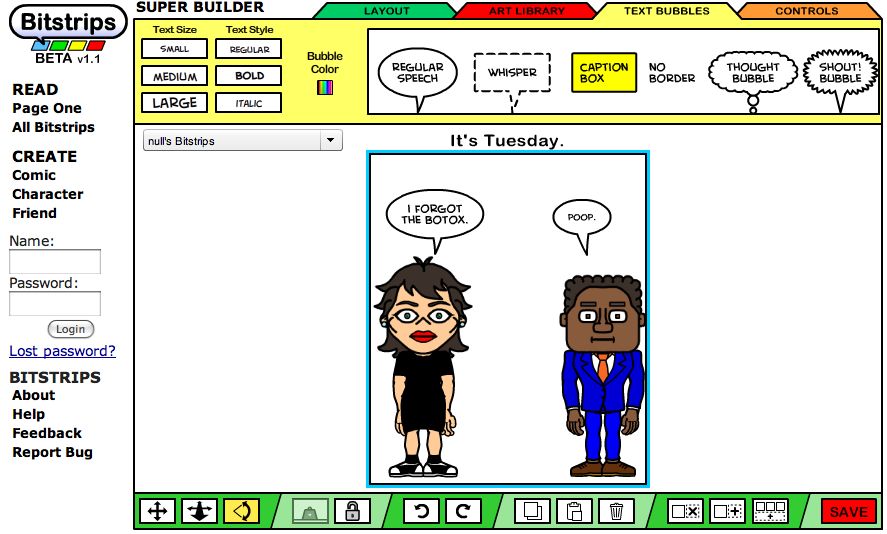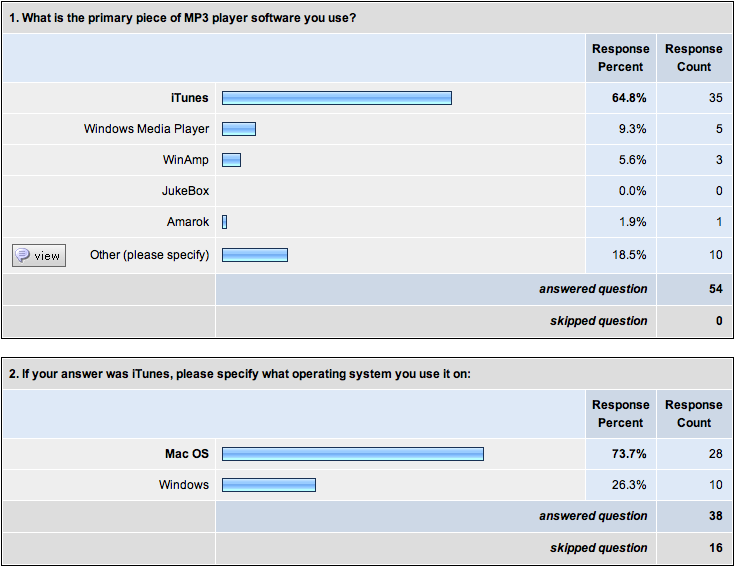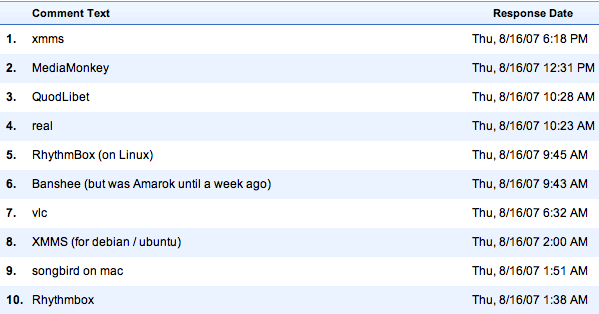Wordle
Wordle is a fun tool for making what I will call “nice-looking tag clouds”. It’s like tag-tinted glasses for the written world.
Here are two I made today.
LaTeX – from the first few paragraphs of the Wikipedia entry on LaTeX
My del.icio.us tags – from my del.icio.us
These are super-customizable but I can’t let myself play with it that long. (That’s what she said.)
I am very busy finishing my thesis; the plan now is to finish and move out of Cambridge at the end of July. I will come back to blogging, hopefully daily again, at that point. I miss it quite a bit. So stay tuned…
The Mathematics in Music
I went to a very interesting performance today: “The Mathematics in Music: a concert-conversation with Elaine Chew”, in Killian Hall at MIT. Elaine is visiting Harvard for the year from USC, where she is a professor. She has an amazingly broad background that is super-pleasing… having studied math, computer science, music performance, and operations research.
Elaine performed four piano pieces, three of which were composed just for her, that use playful tricks in math as compositional inspiration. Some of these tricks included:
- Composing with a meter determined by the numbers in a row (or column) of a completed Sudoku puzzle. This piece had a different time signature for every measure… 3/8, 1/8, 7/8, 9/8, and so on, accompanied by an entirely different sequence for the other hand. I was very impressed that anyone could play a piece like that. Listening in the audience, you want desperately to tap your foot to ground yourself in some kind of beat, but it’s impossible.
- A bi-tonal piece: right hand and left play in different keys. Chew likened this to patting your head and rubbing your belly at the same time.
- Genetic programming: The composer applies the idea of genetic mutations and substitutions on a familiar theme at the note and phrase level, which results in some jarring effects.
Elaine and her colleague, Alexandre Francois, developed a way of visualizing tonality called MuSA.RT, which accompanied her during two of the pieces. MuSA.RT shows (as a real-time accompaniment to MIDI-enabled piano) the changing notes and key of the piece along a spiral that is kind of like a 3-D version of the Tonnetz. More on the model in Elaine’s paper (PDF).
Make your own comics
I am very happy about Web 2.0 today. It sort of hit a trampoline when I saw kottke post the most elaborate Line Rider track ever. People are crazy! Crazy awesome.
Then I saw Bitstrips on boingboing: “BitStrips is a fast, easy, sharing-friendly comic creation site — you make ‘characters’ using a Wii-style menu, pose them and fill in dialog, layout your strips and monkey with the backgrounds, borrowing material from any of the thousands of strips that have been made to date.” Yarg, this is the perfect distraction from my thesis.
“Try quitting applications”
The disk “X” is in use and could not be ejected.
Try quitting applications and try again.
I get this error message a lot on my Mac. And it’s so completely irritating. “Yeah, just… you know, quit some things and try again.” T_T
Yesterday someone showed me a way to identify what’s holding onto your disk. Just type this in your Terminal:
lsof +D <path to disk>
For example:
[mycomputer:~] guest% lsof +D /Volumes/LaCie/
COMMAND PID USER FD TYPE DEVICE SIZE/OFF NODE NAME
AdobeRead 11375 ..... ... ... .... ........ .... /Volumes/LaCie/dsp.pdf
… So if I quit Adobe Reader, I can then eject LaCie.
Making Terminal nerdier
I just sat in on a Max OS X Leopard Development Tools talk, where I heard about a few things that are pretty nerdy and pretty silly. nerdy + silly = awesome
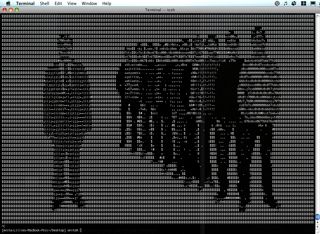 Play QuickTime movies as ASCII in your Terminal — The code + app are here, although I had to rebuild mine to get it to work. This has been on the nets for a while, but it was new to me.
Play QuickTime movies as ASCII in your Terminal — The code + app are here, although I had to rebuild mine to get it to work. This has been on the nets for a while, but it was new to me.
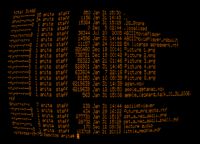 Download GLTerminal and get a working terminal window with graphics that simulate those old green/amber, flickering, curved-on-the-edges terminals I remember from the early 80s. Complete with low baud rate simulation (hahaha), and adjustable flicker rate. Here’s a version for 10.5 Leopard (make sure to set “Preferences” first, as described on this page).
Download GLTerminal and get a working terminal window with graphics that simulate those old green/amber, flickering, curved-on-the-edges terminals I remember from the early 80s. Complete with low baud rate simulation (hahaha), and adjustable flicker rate. Here’s a version for 10.5 Leopard (make sure to set “Preferences” first, as described on this page).
Also mentioned was code that enables you to read from the accelerometers and light sensors in your Apple laptop. Google Code has provided the Quartz Composer patches that grab the same information. I’ve been dying to mess with this, but don’t have time these days. I’m hoping one of my friends will read this, and then make something totally awesome with it.
Now off to watch all those “Get a Mac” commercials I’ve been missing…
Want to set up a wiki really easily?
 I just set up a wiki in perhaps a little more than 12 seconds, for our class, using pbwiki. Highly recommended for wikis for all occasions!
I just set up a wiki in perhaps a little more than 12 seconds, for our class, using pbwiki. Highly recommended for wikis for all occasions!
“It’s as easy as a peanut butter sandwich.” (And has the added benefit of making me hungry.)
Thanks to K for this recommendation… she says she uses it for her personal notes for work, and she can edit them anywhere she has an internet connection. A great idea.
“Helvetica rejected Sonic Youth.”
I just had the pleasure of watching Helvetica, a film about the font, typography, and the wide range of deep responses we can have to the way we write our letters in space. It is a great movie; go see it if you can.
Director Gary Hustwit was there with us, answering questions after the show. The funniest part was him describing how he got the music for the film (“What does Helvetica sound like??”), most of which was straight from the iTunes playlist he was listening to at the time he conjured up the idea for the film. (Think Four Tet, Caribou, Sam Prekop.) He’s got a background producing music documentaries, so has plenty of connections.
Hustwit says he even got five unreleased, instrumental tracks from Sonic Youth, for him to use in the film. But the tracks just wouldn’t fit, no matter how hard he tried. “Helvetica rejected Sonic Youth.”
The way that this statement makes so much sense is… indescribable to me, and utterly satisfying.
MP3 player software.
Here are the current results of the survey I posted last night:
Here’s what the ten people in the “Other” category are using:
Thanks for all of your responses! Even though this is certainly not an unbiased sample set, it looks like building something for iTunes is a pretty safe way to go. Hooray for quantitative decision-making!
MP3 player software?
Maybe you guys can help me learn something… I’m wondering what MP3 player software my friends use.
I set up a very short (2-question) survey at SurveyMonkey:
What MP3 player software do you use?
It should only take 6-10 seconds. And the benefit will last a lifetime. Maybe.
Thanks so much to all who help by answering! Your input will help me decide what my next project — a visualization of your own music listening patterns — will focus on.
Addendum: One day later, I posted the survey results in this blog post.
Romanesco
In honor of getting to see Benoît Mandelbrot speak yesterday at IBM in Cambridge, and of his mention of the crazy-cool cauliflower/broccoli mix romanesco, I tried to draw a 2-D version of the fractal veggie in Processing. I wanted to project it onto cones, but I just don’t have the time right now.
This is a fractal-like thing I made up from Fermat’s spiral and discs, which I’ve been playing around with lately.


Another really nice photo of romanesco
Nice collection of photos and commentary on romanesco and fractals



